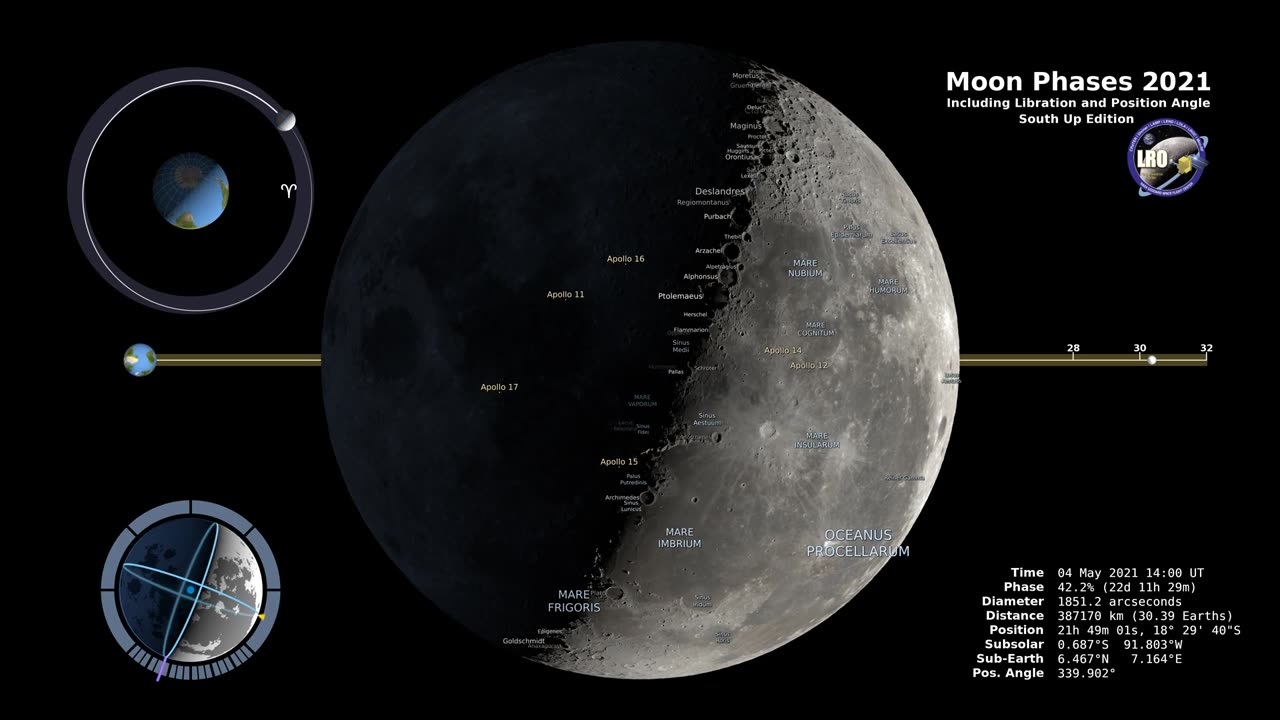Premium Only Content

most interesting moon phase 2021#space#moonphase#moonfacts
Moon phases refer to the different appearances of the Moon as it orbits around the Earth. The changing positions of the Moon, Earth, and Sun cause the Moon to exhibit different amounts of its illuminated side, leading to the various phases that we observe from Earth.
The eight primary moon phases, in order, are:
New Moon: The Moon is positioned between the Earth and the Sun, and its illuminated side is facing away from Earth, making it appear mostly dark.
Waxing Crescent: A small, illuminated crescent is visible on the right side of the Moon.
First Quarter (Waxing Quarter): Half of the Moon's visible side is illuminated, resembling a half-moon shape.
Waxing Gibbous: More than half but less than the entire visible side of the Moon is illuminated.
Full Moon: The entire side of the Moon facing Earth is illuminated, making it appear as a complete circle.
Waning Gibbous: More than half but less than the entire visible side of the Moon is illuminated, now on the left side.
Last Quarter (Waning Quarter): Half of the Moon's visible side is illuminated, resembling another half-moon shape, but on the left side.
Waning Crescent: A small, illuminated crescent is visible on the left side of the Moon.
These phases occur in a predictable cycle, with a complete lunar cycle taking about 29.5 days to complete. This is why lunar calendars have approximately 29 or 30 days in a month.
Observing the moon phases can be a fascinating way to track the Moon's motion in relation to the Earth and the Sun, and it has cultural and practical significance in various societies and fields, including astronomy, astrology, and agriculture.
#MoonPhases
#Astronomy
#LunarCycle
#SpaceExploration
#CelestialEvents
#NightSky
#LunarPhases
#MoonObservation
#Skywatching
#LunarCalendar
#LunarIllumination
#FullMoon
#NewMoon
#WaxingCrescent
#WaningGibbous
#FirstQuarterMoon
#LastQuarterMoon
#LunarMotion
#LunarAstronomy
#MoonFacts
-
 LIVE
LIVE
Barry Cunningham
1 hour agoPRESIDENT TRUMP SPEECH AT MAKING HEALTH TECHNOLOGY GREAT AGAIN! EVENT AND MORE NEWS!
1,394 watching -

Pop Culture Crisis
2 hours agoOprah Tsunami BACKLASH, Billie Eilish RACIST? Joey Swoll BENDS THE KNEE | Ep. 888
10K4 -
 LIVE
LIVE
The HotSeat
1 hour agoLibs Are BIG Mad Over New Commercials and The Fed Is Just Another Political Weapon
551 watching -
 LIVE
LIVE
Film Threat
6 hours agoSAN DIEGO COMIC-CON! FANTASTIC FALL OUT FOR MARVEL | Hollywood on the Rocks
63 watching -
![[Ep 717] NEVER Apologize to The Counterculture Mob! Be You, Be True | Oprah & “Elites” God Complex](https://1a-1791.com/video/fww1/81/s8/1/-/G/X/6/-GX6y.0kob.1-small-Ep-717-NEVER-Apologize-to-T.jpg) LIVE
LIVE
The Nunn Report - w/ Dan Nunn
1 hour ago[Ep 717] NEVER Apologize to The Counterculture Mob! Be You, Be True | Oprah & “Elites” God Complex
167 watching -
 1:38:10
1:38:10
The Quartering
3 hours agoKash Patel "Discovers" Secret FBI Files On Trump, NYC Shooter New Conspiracy, Planned Parenthood
119K19 -
 56:56
56:56
Crypto Power Hour
3 hours ago $1.21 earnedSmart Contracts On The Blockchain
12.9K9 -
 1:00:03
1:00:03
Russell Brand
5 hours agoRand Paul: Trump, Tariffs & The Tyranny of Centralized Power - SF623
141K117 -
 9:01
9:01
Dr. Nick Zyrowski
1 month agoThe BIG NAC ( N-Acetyl Cysteine) Mistake
17.1K10 -
 2:12:44
2:12:44
Tucker Carlson
5 hours agoJohn Mearsheimer: The Palestinian Genocide and How the West Has Been Deceived Into Supporting It
86K152